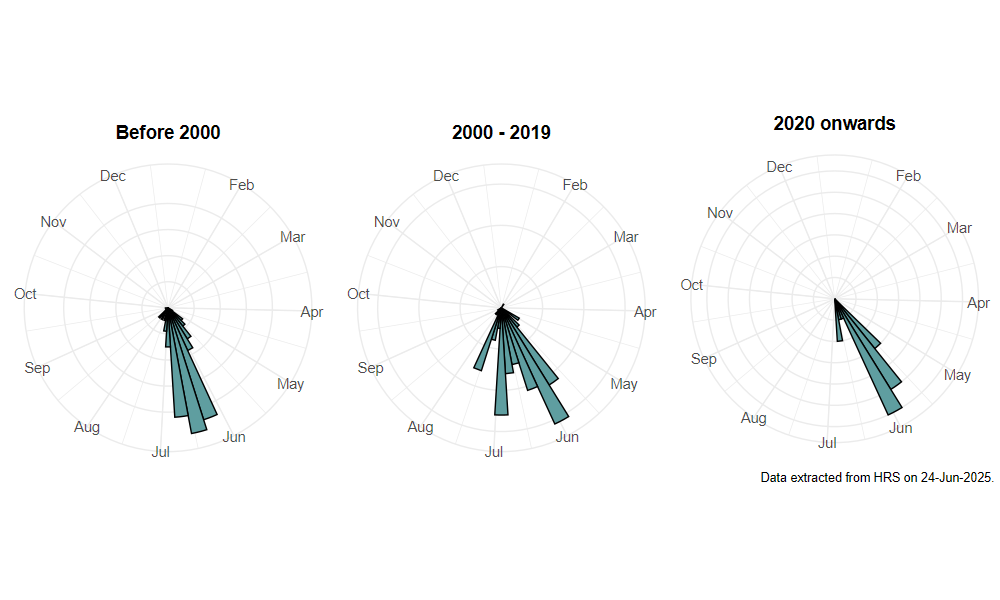Platycheirus podagratus (Zetterstedt, 1838)
Identification
Identification difficulty = 3. ![]()
![]() according to Ball & Morris, 20241
according to Ball & Morris, 20241
Biology
Larva unknown. Occurs at the edges of oligotrophic lakes and in boggy areas on moorland at moderate altitudes, although it has been found at 700m in the Pennines. Adults fly low amongst stands of vegetation such as sedges Carex sp. or rushes Juncus sp., usually close to water, and are often found by sweeping. It has been found visiting sedge flowers.
Flight period
The following plots show the number of unique records per week excluding those reported to be of immature stages.

Status
Was listed as 'Notable' by Falk, 19912, but dropped from this status by Ball & Morris, 20143 who consider it LOWER RISK.
Distribution
A scarce and local species of northern England and Scotland, with most records from the Scottish Highlands. There are records from North Wales and a few from southern England, but these require confirmation. Some older records, which do not take into account recent species splits, may refer to P. occultus. Again, there are very few recent records from the southern part of the range, suggesting that the range reduction represents a retreat northwards.

Trends
The following plots show the Frescalo TFactor vs year and a map of the rescaled frequency (all records) for the species.
-
Ball, S., & Morris, R. (2024). Hoverflies of Britain and Ireland. WILDGuides (3rd ed.). Oxford: Princeton University Press. ↩
-
Falk, S. (1991). A review of the scarce and threatened flies of Great Britain. ( No. 39). Research and Survey in Nature Conservation (pp. 1–194). Peterborough: NCC. ↩
-
Ball, S., & Morris, R. (2014). A review of the scarce and threatened flies of Great Britain. Part 6: Syrphidae. ( No. 9). Species status (pp. 1–130). Peterborough: JNCC. ↩